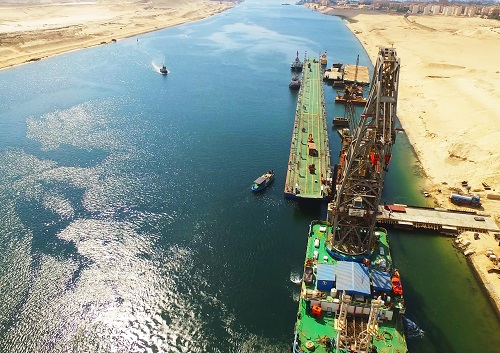The closure of the Suez route has changed the fundamental outlook for container shipping in 2024, with a potential capacity crunch in Asia looming in the short term, according to the January report of the Baltic Exchange.
In the report, Vespucci Maritime CEO Lars Jensen wrote that up until mid-December 2023, the baseline outlook for 2024 was for a continued cyclical downturn likely with freight rates bottoming out in late 1Q or early 2Q 2024.
Jensen wrote, “After this, it was anticipated that carriers would begin to idle more capacity to stabilise and strengthen rates from what had already become loss-making levels. The de-facto closure of the Suez routing has changed this baseline outlook fundamentally.”
Threats of attacks by Iran-backed Houthi rebels in the Red Sea, the entry to the Suez, has made many operators detour vessels around the Cape of Good Hope.
Operating the Asia-Europe and part of the Asia-US East Coast network will absorb 5 to 6% of global capacity. This should be manageable given the amount of overcapacity that had accumulated in the market.
Jensen continued, “Clearly, supply chains would have longer transit times, with Asia-North Europe up by 7 to 8 days and Asia-Med up by 10 to 12 days at least. It will also lead to rates markedly higher than pre-crisis. This will cause carriers to become profitable again. But rates will peak in the next four weeks and then abate to this new level.”
The slow repositioning of empty containers, common during the Covid-19-fuelled pandemic, is likely to repeat itself.
Approximately 780,000 TEU of empty containers less than planned will arrive in Asia just prior to Chinese New Year. This is a major factor in pushing up spot rates presently.
In addition, Kieran Walsh, Commodity Broker at Freight Investor Services, wrote that all Freightos Baltic Exchange (FBX) routes have been dramatically impacted by the crisis, predictably FBX11 (China/East Asia to North Europe) and FBX13 (China/East Asia to the Mediterranean) showing the sharpest increases.
FBX11 stands at $4,789 as of 8 January 2024, having been at US$1,446 on 8 December 2023 and US$1,446 on 8 January 2023. Similarly, FBX13 stood at US$1,482 on 8 January 2023, rising to US$2,299 on 8 December 2023 and standing at US$5,202 on 8 January 2024).
Martina Li
Asia Correspondent







